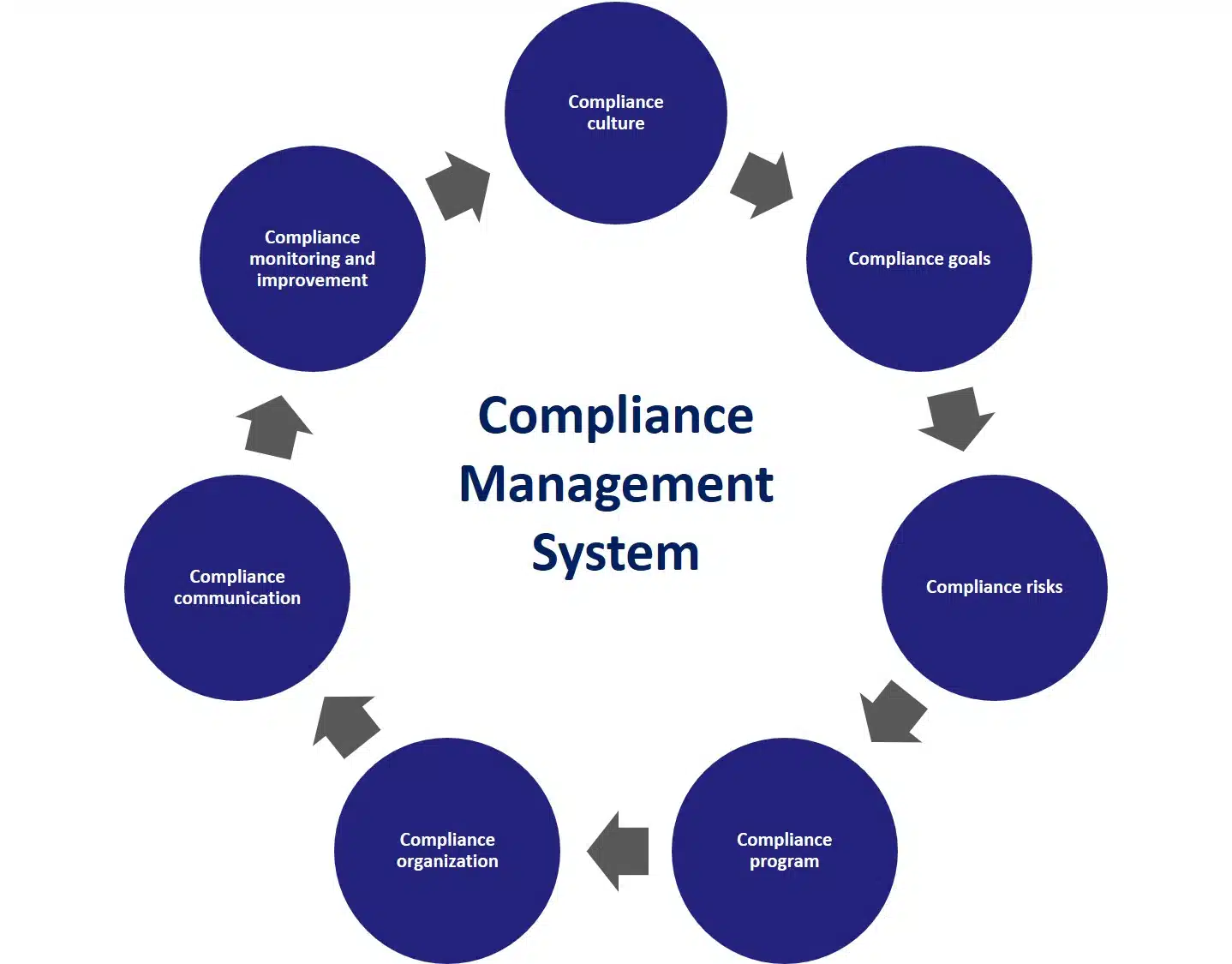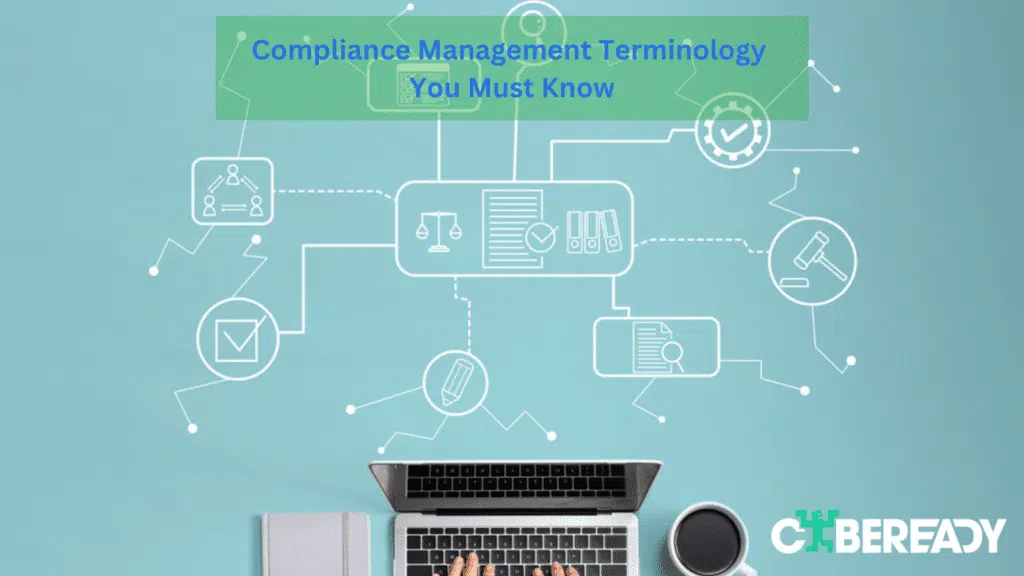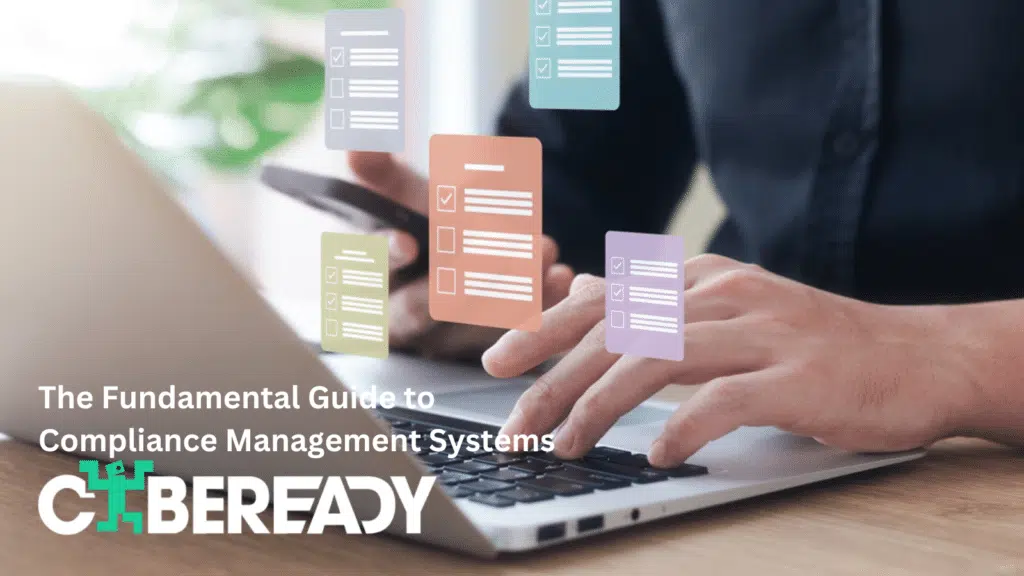In 2021, the world experienced one of the worst years for cyberattacks, as attacks rose and several incidents crippled high-profile businesses. Despite the growing threat, many businesses are completely unprepared to handle an attack, with 50% of small businesses reporting that they don’t have a cybersecurity plan in place. This leaves both businesses and their clients vulnerable to the potentially catastrophic results of a data breach and puts the security of individuals and enterprises at risk.
This danger has concerned governments worldwide and has jumpstarted the implementation of privacy and security regulations that businesses must comply with to protect their users and customers. The penalties for failing to comply with these regulations are extremely high, ranging from fines in the millions of dollars to public admissions of guilt that can cause severe damage to your organization’s reputation and destroy your customers’ trust.
In addition to avoiding penalties, maintaining compliance can be extremely beneficial from a business point of view. Compliance will prove to your customers that you have earned their trust and put their interests first.
Implementing compliance management strategies can help guarantee that all your products and services comply with the regulations set in place, prevent hefty non-compliance fines, and mitigate the potential harm of cyberattacks, improving your organization’s overall resilience to cyber threats. Whether you’re new to compliance or planning to refresh your procedures, this guide is designed for security professionals keen to revamp their cybersecurity processes.
In this document, we break down everything you need to know about compliance management, including:
- What Is a Compliance Management System?
- Compliance Management Terminology You Must Know
- What Are the Three Key Elements of a Compliance Management System?
- 4 Benefits of Having a Compliance Management System in Your Organization
- Tips for Creating Your Compliance Management Plan
- Resources for Compliance Management
- Launch Your PCI Compliance Program
- Improve Your Compliance Management with CybeReady
Keep reading to learn how you can upgrade your compliance and avoid any unpleasant incidents.
What Is a Compliance Management System?
A Compliance management system (CMS) is a system that includes all the policies, processes, procedures, monitoring, and testing programs that concern compliance or compliance auditing. This gives you a clear and structured strategy that makes it simple to comply with legal requirements. Implementing a CMS can help you get a clear view of your organization’s compliance responsibilities and ensure that all the requirements are encompassed by the business process.
The system then allows you to review all the operations to confirm compliance is reached. If the final review shows any areas that may not be compliant, you can then take corrective measures or update procedures as soon as possible. Frequent reviews and a thorough audit process allow you to easily identify and address any potential risks to compliance or security.
Compliance Management Terminology You Must Know
Before beginning your compliance management journey, here are a few terms you need to know:
- Audit: an independent review of your records, activities, and system to assess your security and ensure compliance with policies or recommend any changes or improvements.
- Attestation: documented, formal proof that attests to your organization’s security status.
- Benchmarking: a management strategy in which leadership sets productivity or security goals based on best industry practice and then uses quality level as an evaluation reference by comparing to industry ideals.
- Bribe: gifts, money, or other inducements that are used to persuade someone (such as an auditor or superior) to act in your best interests.
- Chief Privacy Officer: the senior executive responsible for managing risks or threats related to privacy laws and regulations.
- Chief Risk Officer: the corporate executive responsible for identifying, analyzing, and mitigating both external and internal risks.
- Code of Conduct: a specific set of guidelines, principles, and expectations employees must follow.
- Compliance: the conditions or processes required to be in accordance with specific requirements, including the measures necessary to ensure that the organization follows industry or government rules.
- Corporate Governance: the process of overseeing cybersecurity teams responsible for preventing business and security risks.
- Cyber Security: the software, training, or solutions used to protect your organization from criminal or unauthorized use of data, or the state of being protected against such attacks.
- Ethics: the rules and etiquette that must be followed while using a computer system to ensure good and moral behavior.
- Fraud: wrongful or criminal deception, such as phishing, designed to result in the attacker’s financial or personal gain.
- General Data Protection Regulation (GDPR): an official legal framework that outlines the requirements for the data protection needed for organizations collecting and processing the personal data of individuals with EU (European Union) citizenship.
- Governance: the process of ensuring that your organization’s cybersecurity programs and models align with business goals and comply with government/industry regulations.
- Governance, Risk, and Compliance (GRC): a method used to align IT goals with business objectives while achieving regulatory compliance and mitigating cyber risks.
- Gramm-Leach-Bliley Act (GLBA): a federal law that requires financial organizations to maintain transparency and share how data is used, allowing customers to opt-out of having their data shared with third parties and apply data privacy protections.
- Integrity: maintaining the data and information in your system to ensure that it isn’t modified or deleted by unauthorized parties.
- Ransomware: a form of malware designed to block access to your computer system or data. Files are encrypted so attackers can steal the data or demand a ransom to return it to its original state.
- Risk Assessment: a process that helps organizations outline their key business objectives and the IT assets required to achieve them, as well as the cyberattacks that stand in the way of these goals.
- Transparency: in the context of cybersecurity, this generally refers to maintaining visibility with what user data you collect, how it’s used, and how it’s stored, as well as the security the organization uses and its incident response strategy.
- Workplace Harassment: repeated and unreasonable behavior generally directed towards an individual. This can be through online interaction such as e-mail or in person, and generally puts the victim’s health and safety at risk.
You can continue referring to these terms as you design, build, and implement your compliance management strategies.
What are the three key elements of a Compliance Management System?
Although many elements make up a compliance management system, they can be broken down into three central pillars consisting of the following:
1. Board of Director Oversight
Your organization’s leaders shoulder a lot of responsibility, but compliance always needs to be a priority. Having a compliance system that is implemented from the top down throughout the organization can help emphasize the importance of compliance to the rest of your organization’s employees. Additionally, senior management can bring the expertise and experience needed to refine your compliance effort and help your organization achieve its long-term compliance goals.
Senior management should have a clear vision for their compliance expectations and clearly communicate it to the staff and third-party vendors or contractors through communications and training. These initiatives are often led and overseen by a compliance officer or chief compliance officer. The management team is consistently updated as to the state of compliance and receives reports of any compliance issues that require tactical or strategic shifts.
2. Compliance Program
Compliance is a continuous process, and it’s essential to create a list of guidelines in order to maintain compliance in the long term. A compliance program will serve as the backbone of your compliance management system and be the center where all your compliance controls and countermeasures are planned, designed, and implemented. Most of these programs include documents that contain policies, internal controls, compliance standards, and processes that are maintained by leadership and serve as references for employees to use as a benchmark for their work.
The team in charge of this program may also assign tasks to other staff members and will track workflows and communications to ensure that these actions are implemented. The team will receive regular and consistent reports and will also be responsible for providing employee training programs that are essential to ensure employee compliance. Regularly scheduled training not only helps your employees keep up with evolving government regulations, it also upgrades your organization’s overall security by turning your employees’ education into an extra level of protection.
3. Compliance Audit
Compliance audits are an essential part of almost every industry. Audits involve having an independent party come in and review whether your organization complies with both internal policies and regulatory requirements. A report is then compiled to give leadership the information they need to maintain compliance and identify and mitigate compliance risks. Throughout the audit, the external party (auditor) will examine and assess your systems unbiasedly.
Consistently maintaining compliance becomes challenging over time, so having an impartial expert assess your compliance provides an invaluable opportunity to make improvements. While many organizations experience audits as stressful, preparing for the audit (for example, by familiarizing yourself with the compliance requirements and keeping your records and reports in order) can help streamline the process and help your auditor quickly locate the information they need.
Another helpful preparation method is performing continuous internal audits, compliance monitoring, and risk assessments in-between external audits. This allows you to monitor your organization’s compliance efforts in real-time and makes it easy to find areas for improvement.

4 Benefits of Having a Compliance Management System in Your Organization
Implementing a compliance management system not only helps you maintain compliance consistently over time, it also provides numerous other benefits, including:
1. Increased brand visibility
To maintain your organization’s reputation, you need to be able to prove to your customers that you are committed to building a sustainable brand image. One of the first things users look out for is a commitment to their safety and proven responsibility and trustworthiness. By implementing compliance management software (CMS), you prove your commitment to user security, thereby equipping your organization with these characteristics. Making compliance a priority will make it easier to attract and retain customers and make potential employees eager to work with you, increasing your overall performance and productivity.
2. Reduced risks
Failing to fully comply with regulations brings with it a wide variety of potentially catastrophic risks. Organizations may find themselves embroiled in lawsuits that often result in large fines to governing bodies and payouts to users whose data has been violated. In addition to the resultant costs of a lawsuit, the cost of the process can also be draining, particularly as these lawsuits are often long and drawn out. This money could be better invested in company growth, and huge losses can cripple your organization in the long term.
Furthermore the risk of cyberattacks rises with non-compliance, increasing the chances of your organization falling victim to data breaches, ransomware, and phishing scams that can also cost your organization a hefty sum and delay operations, reducing productivity. Having a compliance management system in place allows you to rapidly decrease instances of compliance violations. The data gained through real-time monitoring can also help you adapt your workflow, achieve greater efficiency, and avoid long and costly lawsuits.
3. Decreased costs
Investing in compliance management doesn’t just help reduce the legal costs of non-compliance – it also offers a return on investment by reducing operational costs. While the initial investment may feel pricy at first, the investment is clearly worthwhile once you begin reaping the benefits. Integrating the system into your workflow makes meeting compliance standards a quick and simple task, relying less heavily on costly human resources.
You can also implement automation within your compliance system to reduce the risk of human error leading to oversight. Thoroughly educating your staff eliminates the need to hire additional specialty staff, allowing you to channel the resources you would have spent on new personnel into new projects
4. Improved efficiency
Implementing the right strategies or utilizing compliance management software can gather all your data components into a single, centralized location, making it possible to track and manage compliance easily. Having all your resources in a single location also guarantees the uniformity of the information you relay and retrieve. It also improves interdepartmental harmony as it ensures all your information is easy to track and universally agreed upon, increasing efficiency and preventing time wastage on disorganized data.
Tips for Creating Your Compliance Management Plan
Not sure where to begin developing your compliance management plan? Just follow these simple tips [link the x principles of US compliance systems] for a quick and easy development process:
Create a program oversight
Before you begin building your compliance program, you need to get a clear view of the state of your organization. This includes getting relevant parties on board, such as stakeholders, internal subject matter experts, and authorities, to ensure that you’ve got the support of your leadership from the start. At this point, you should also begin providing employees with training so that they and the relevant leadership understand the importance of compliance and to make sure that all participants in the program are on the same page.
Working with high-level stakeholders may mean that your goals for the compliance program diverge, but to ensure success, you need to provide the information and education needed to align the goals of all your participants. At this point, you can also appoint a committee or individual to oversee the compliance program from beginning to end.
Your compliance officer doesn’t have to be a C-level executive, it can be anyone in your organization capable of managing the project. Regardless of who your compliance officer is, they should have clear authority to issue instructions across teams and have the final say on any compliance projects. Without clear leadership and clear oversight of your goals from the outset, it’s nearly impossible to make an effective compliance management system.
Utilize technology that improves visibility and team alignment
To simplify the work of your new compliance head and their team, you can use third-party tools or software to take over certain aspects of the compliance process. While the software you use will depend on your organization and the industry’s individual needs and compliance requirements, the wide range of solutions to choose from makes it easy to find the option that works for you. Using tools is especially important if your industry has complex requirements or regulations that change frequently, but the right tools can benefit any industry. Software solutions will keep your compliance process secure from human error and other risks.
With the help of a digital solution, your team can begin automating certain aspects of the compliance process, such as report creation, supervision and monitoring, and even risk analysis. Digital solutions help ensure your organization is always ready and able to maintain up-to-date data, reports, and documents. This keeps the compliance process traceable and transparent – making errors easy to track and speeds up the audit process.
In addition to tools automating the process itself, you can use tools to automate peripheral tasks such as employee training to ensure the process remains as fast and seamless as possible from beginning to end.
Communicate the plan and provide training
Communication isn’t only critical for success at the beginning of the compliance process; maintaining clear and consistent communication throughout is one of the most important keys to the success of your project. From the outset, all participants need to understand the goals, motives, and benefits of the program so that your employees understand that regulations aren’t just another arbitrary set of rules to follow but a critical part of your organization’s success. By helping your employees understand the “whys” of compliance and keeping your expectations realistic and clear, you are more likely to have staff at every level and from every department on your side.
That being said, maintaining continuous communication and training can be challenging, especially as regulations continually shift. Scheduling regularly-updated and engaging training programs helps keep your employees invested in the program’s success. Using training management software can help save your organization time and money by providing you with all the benefits of consistent training without the costs of in-person workshops and seminars.
Account for routine maintenance
Maintenance is an essential part of the upkeep of any tool or system. Like any of your other tools, your compliance management strategy will most likely require routine overhauls. Some of the reasons you may need to re-assess your system include:
- Keeping up with current, evolving standards
- Ensuring that all employees understand the requirements and goals of the system
- Reassessing whether your current compliance system aligns with your business functions and goals
- Reviewing processes and operations and updating whenever necessary
- Tracking, locating and recording violations wherever or whenever they occur
These tasks can be assigned to a compliance manager, who will ensure that these processes occur routinely and that your system and all its tools are regularly reviewed and updated.
Implement a monitoring and auditing system
Maintenance is essential, but knowing when to do maintenance is close to impossible without an effective monitoring and auditing system in place. For your system to succeed, you not only need to monitor your employees, software, and solutions to ensure that their compliance is up to scratch but also perform internal audits and regularly update your policies to maintain compliance with shifting regulations.

Monitoring isn’t a convenient extra step – it is critical to future-proof your program and ensures your employees and software are still compliant despite frequently shifting regulations. These internal audits should occur at least annually, and organizations should view regulations as an organic and dynamic framework that can change at any moment. Although this seems overwhelming, third-party solutions such as monitoring software automate the task and leave your team free to focus their attention on other tasks. Monitoring should be followed by reviews, both with your employees and of your policies to ensure that both are still relevant.
Enforce consistent discipline
To ensure guidelines are kept, they must be enforced. If no corrective measures are taken when errors occur, then the entire system will fail to serve its purpose. Accountability must be built into the program throughout its lifecycle, and your guidelines and protocols must include clear disciplinary guidelines that are actively enforced.
In addition, you need to document your employees’ training related to compliance to prove that they’ve had access to all the resources and training they need to meet your expectations, and failure to do so was their responsibility alone. You can use training software or other solutions to track employee progress and ensure they’re keeping up with the educational curriculum you set for them. Once employees see that the guidelines are actively enforced, they’ll fully commit to meeting goals and performing their duties.
Take corrective action when necessary
One of the most essential steps for compliance is also the most seemingly obvious – taking action. All the data and information you collect in the above steps serve no purpose if you don’t implement it into actions that advance your organization’s compliance. For example, the information you collect from monitoring and auditing can be used to patch up areas that are non-compliant, improve areas that are compliant, or upgrade areas that are behind on current regulations.
This applies to employee training as well. Offering employees access to the information and resources they need is critical – but ensuring they implement that information is just as essential. Employees from every department play a key role in your organization’s overall cybersecurity profile, and by implementing the information you give them, they can serve as an extra layer of security and quickly spot compliance issues as they use your system.
Resources for Compliance Management
As you begin your compliance management journey, use the following resources. Each highlights some of the key tools and tips you need to make your system as efficient as possible.
Top 8 Compliance Systems Management Solutions for 2023
As compliance has become more of a priority, the amount of solutions available to streamline and simplify the compliance process has increased exponentially. Although each business and industry is unique, and each has its own needs and requirements, there are a few things you need to know before you begin identifying the best solution for you, including
- What compliance management solutions do for your business
- The benefits of implementing a compliance management solution
- How to choose the right solution for your business
- The best solutions currently on the market
We’ve given you a head start on the process by collecting all of the above information, as well as some of the top compliance management solutions for 2023.
6 Overlooked Tips to Automate Compliance Monitoring
Compliance monitoring is an intricate process that involves many people and tools, each playing a critical role in the process. With such a wide range of moving pieces, it can be challenging to keep track of where your compliance strategy currently stands, which is why monitoring is essential. But constantly monitoring operations is a massive undertaking so here’s what you need to know before you start:
- Why constant monitoring is essential
- How you can automate the monitoring process
- The benefits of automation
- Overlooked best practices that make automation a breeze
You can learn all that and more by checking out our X Overlooked Tips to Automate Compliance Monitoring article.
The Principles of US Compliance Systems
There are a large range of compliance systems worldwide, and each uses its own specific regulations and is run by its own governing body, such as the GDPR in the EU. As compliance systems worldwide vary, and some are even specific to certain cities, keeping track of all the regulations can be complicated. For example, in the US, here’s what you need to ask yourself:
- What compliance requirements are expected of my industry?
- Which regulations apply to which areas?
- What are the legal penalties for non-compliance?
- What are the foundational principles of compliance?
Start your US compliance journey with all this and more in our article on The X Principles of US Compliance Systems.
Launch Your PCI Compliance Program
In this guide, we covered general compliance concepts, including compliance management systems, what they are, why they matter, and how you can implement them. We also discussed how you can achieve compliance by developing a compliance strategy with help from automated tools and employee training. Now that you’re ready to begin launching your own compliance management program, don’t forget the following essential tips and best practices:
- Keep up to date on the latest compliance standards and practices
- Perform scans and audits as early and often as possible
- Keep all sensitive data securely stored and encrypted
- Segment your network to protect sections from breaches and reduce costs
- Maintain data security- even while the data is in transit
- Prepare thoroughly for audits and assessments
- Hold regular employee education and training sessions
- Only collaborate with third parties who maintain equally high compliance standards
- Understand the scope of your environment and resources
- Carry out regular and comprehensive penetration tests
- Address non-compliance or security vulnerabilities as quickly as possible
- Restrict access to sensitive information
Improve Your Compliance Management with CybeReady
Compliance is a broad and varied field, and there are many techniques, solutions, and practices you can implement to ensure its effective application, but one central pillar is essential, and that is education. Having all your employees play a role in your compliance strategy is a critical key to its success, and only by empowering them with education will your employees be able to take an active role and interest in your organization’s compliance strategy and overall cybersecurity position. Cyber education gives personnel across all levels and departments the tools they need to quickly locate and mitigate compliance breaches, preventing the risk of full-scale non-compliance or, worse, a cyber-attack.
CybeReady helps you create up-to-date training programs that reflect your organization’s compliance goals and continue to remain fresh and engaging for employees. Get in touch with us today to learn how you can begin implementing cybersecurity awareness training workshops right away.















